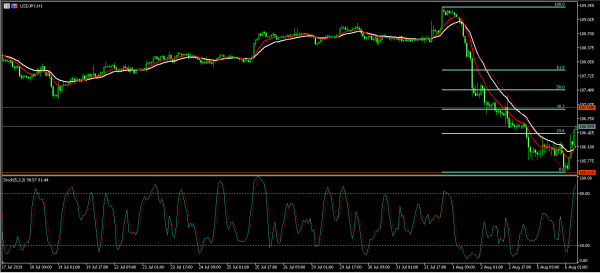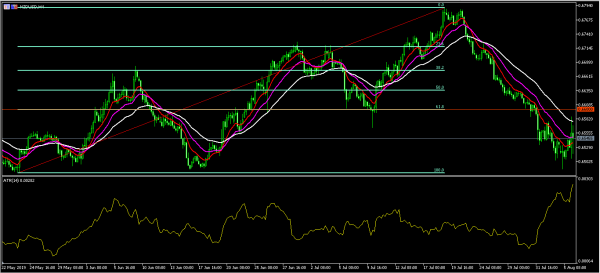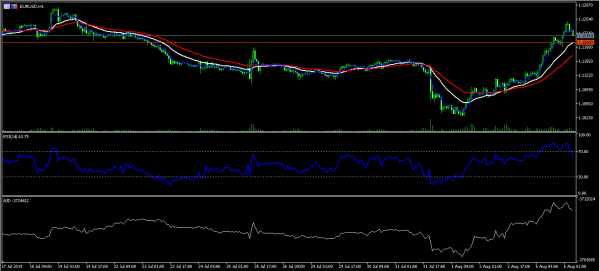US stocks had their worst day of the year yesterday. This came after the Chinese central bank allowed the renminbi to fall below the important floor of RMB 7. This was interpreted as the Chinese way of retaliating against the new tariffs announced by Donald Trump. In a series of tweets, Donald Trump accused the Chinese of currency manipulation and the Federal Reserve for doing nothing to respond. After the market closed, the US Treasury department labelled China a currency manipulator, a symbolic move that will justify additional tariffs.
The New Zealand dollar was relatively volatile in early trading after the country’s statistics office released its employment numbers. In the second quarter, the unemployment rate dropped sharply to 3.9%. This was better than the consensus estimates of 4.3% and the first quarter rate of 4.2%. The labor cost index increased by 2.2%, which topped the consensus estimate of 2.1%. The employment change in the quarter rose by 0.8%. The participation rate remained unchanged at 70.40%. These numbers show that the New Zealand economy is doing relatively well.
The Japanese yen weakened slightly against the USD after the US decision to label China a currency manipulator. Japan’s statistics office released important economic data for the month of June. The average cash earnings increased by 0.4%. This was higher than the consensus estimates of a -0.8% decline. Household spending increased by an annualized rate of 2.7%, which was better than the consensus estimates of 1.3%. On a MoM basis, household spending declined by -2.8%.
Later in the day, investors will be focusing on the new phase of the trade war between the two biggest economies in the world. They will also focus on the interest rates decision from Australia, where the RBA is expected to leave rates unchanged. In Sweden, the market will receive the industrial production data while Germany will release the factory orders numbers. From the US, the market will receive the JOLTS job openings data and the API crude oil inventories.
EUR/USD
The EUR/USD pair declined after three consecutive days of higher highs that started on Thursday last week. The decline was partly attributed to the symbolic news that the US had labelled China a currency manipulator. On the hourly chart, the pair is slightly above the 20-day (white) and 40-day (red) exponential moving averages. The pair is along the 5-day EMA (blue). The 14-day RSI has moved 20 points lower from a high of 84 to the current 64 while the accumulation/distribution indicator has continued moving higher. The pair could continue moving slightly lower to test the important support of 1.1200 (orange).
USD/JPY
The USD/JPY pair rose sharply after three consecutive days of a steep downward move. Yesterday, the pair reached a low of 105.50 (orange), as investors bought the yen, which is viewed as a safe haven currency. As of this writing, the pair is trading at 106.50. On the hourly chart, this price is slightly above the 23.6% Fibonacci Retracement level. The main stochastic indicator has moved above the overbought level of 80, while the signal line (red) is slightly below this level. The 20-day (white) and 10-day (red) EMAs have started a crossover, which is an indicator that the pair’s upward trend could continue. The next level to watch will be 107, which is along the 38.6% Fibonacci Retracement level.
NZD/USD
The NZD/USD pair was struggling for direction after better-than-expected jobs numbers from New Zealand. As of this writing, the pair is trading at the 0.6445 level, which is slightly higher than the weekly low of 0.6487. On the four-hour chart, the pair’s Average True Range (indicator), which is used as a measure of volatility, reached the highest level since April 2. The pair remained slightly lower than the 40-day EMA (white), and along the 10-day (red) and the 20-day (pink) EMAs. The pair could continue moving up to test the 61.8% Fibonacci Retracement level at 0.6600 (orange).















